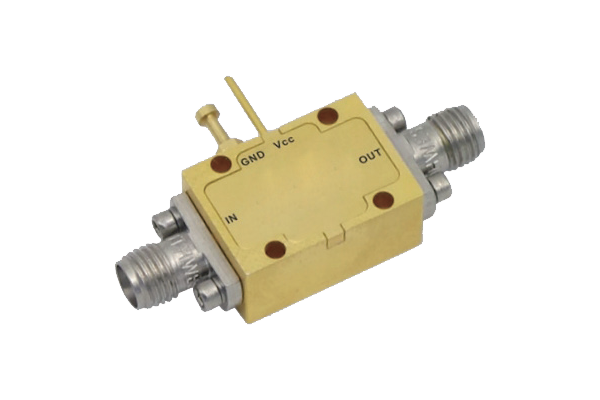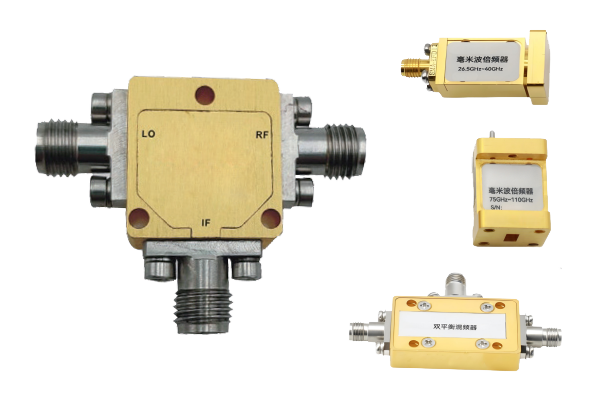
Pin diode devices are now regarded as essential parts in high-frequency circuitry given their inherent performance characteristics Their quick conductive to nonconductive switching and compact capacitance with limited insertion loss make them perfect for switches modulators and attenuators. The core switching mechanism for PIN diodes is based on bias-driven control of current across the junction. That voltage alters the depletion region width in the p n junction thereby changing conductivity. Controlling the bias point makes it possible for PIN diodes to switch at microwave frequencies with low distortion
PIN diodes are often used in elaborate circuit arrangements where strict timing and control are essential They can function inside RF filters to permit or attenuate targeted frequency bands. Also their capacity to manage high power signals makes them applicable to amplifiers power dividers and signal generators. The push for compact efficient PIN diodes has led to broader use in wireless communications and radar systems
Analyzing the Performance of Coaxial Switch Designs
Coaxial switch design is a sophisticated process involving many important design considerations Coaxial switch effectiveness depends on the switch kind frequency of operation and insertion loss metrics. Minimizing insertion loss and enhancing isolation are primary goals for coaxial switch engineering
Analyzing performance involves measuring important parameters like return loss insertion loss and port isolation. These values come from combined use of simulations theoretical predictions and experimental validation. Accurate performance evaluation is key to ensuring coaxial switches operate dependably
- Simulation, analytical modeling and experimental testing are widely utilized to examine coaxial switch designs
- Environmental temperature impedance mismatches and production tolerances can significantly influence switch characteristics
- Emerging developments and novel techniques in switch design concentrate on boosting performance while minimizing footprint and energy use
Optimizing LNA Designs for Performance
Enhancing the performance efficiency and gain of a Low Noise Amplifier is vital for preserving signal integrity in many systems Successful optimization depends on proper transistor selection correct biasing and appropriate circuit topology. High quality LNA layouts suppress noise sources and deliver amplified signals with limited distortion. Modeling simulation and analysis tools play a central role in evaluating the impact of design decisions on noise. Achieving a reduced Noise Figure demonstrates the amplifier’s effectiveness in preserving signal amid internal noise
- Device choice focusing on minimal intrinsic noise characteristics is paramount
- Adopting proper optimal biasing is essential to reduce noise creation in devices
- Topology of the circuit strongly affects total noise performance
Using impedance matching noise cancelling structures and feedback control optimizes LNA function
PIN Diode Based RF Switching and Routing

PIN diode based routing offers versatile efficient control of RF signal paths These semiconductors can be rapidly switched on or off allowing dynamic path control. Key benefits include minimal insertion loss and strong isolation to limit signal deterioration during switching. They are commonly used in antenna selection duplexers and phased array RF antennas
A PIN diode switch’s operation depends on modulating its electrical resistance with a control voltage. When off the diode’s high resistance isolates and blocks the RF path. Forward biasing the diode drops its resistance allowing the RF signal to be conducted
- Further advantages include fast switching low power requirements and compact design of PIN diode switches
Different design configurations and network architectures of PIN diode switches provide flexible routing functions. By networking multiple switches designers can implement dynamic matrices that permit flexible path selections
Evaluation of Coaxial Microwave Switch Performance

The evaluation assessment and testing of coaxial microwave switches is essential to confirm optimal operation in complex electronic systems. Several influencing factors such as insertion reflection transmission loss isolation switching speed and frequency range determine performance. Complete assessment involves quantifying parameters over diverse operational and environmental test conditions
- Additionally furthermore moreover the assessment must address reliability robustness durability and tolerance to severe environments
- Ultimately comprehensive evaluation outputs provide critical valuable and essential guidance for switch selection design and optimization for targeted uses
In-depth Review of Noise Suppression in LNA Circuits
LNAs are indispensable in wireless RF communication systems because they raise weak signals while suppressing noise. This review presents a thorough examination analysis and overview of noise mitigation strategies for LNAs. We analyze investigate and discuss main noise origins such as thermal shot and flicker noise. We also cover noise matching feedback network techniques and ideal bias strategies to mitigate noise. The review highlights recent progress in LNA design including new semiconductor materials and circuit concepts that lower noise figures. By elucidating noise reduction principles and applied practices the article aims to be a valuable resource for engineers and researchers building high performance RF systems
Applications of PIN Diodes for Fast Switching

They possess unique remarkable and exceptional qualities beneficial for high speed switching Minimal capacitance and low resistance support rapid switching speeds for applications needing accurate timing. Additionally their linear response to applied voltage aids in accurate amplitude modulation and switching behavior. This versatility flexibility and adaptability makes them suitable applicable and appropriate for a wide range of high speed applications Use cases cover optical communications microwave circuitry and signal processing devices and equipment
Coaxial Switch Integration and IC Switching Technology
Integrated coaxial switch circuits offer advancement in signal routing processing and handling across electronic systems circuits and devices. These integrated circuits are tailored to control manage and route signals via coaxial connections with high frequency performance and low insertion latency. IC driven miniaturization allows compact efficient reliable and robust designs tailored to dense interfacing integration and connectivity requirements
- Through careful meticulous and rigorous application of such methods engineers can design LNAs with top tier noise performance enabling dependable sensitive systems By rigorously meticulously and carefully coaxial switch implementing these techniques practitioners can achieve LNAs with remarkable noise performance for sensitive reliable electronics By meticulously carefully and rigorously applying these methods developers can produce LNAs with superior noise performance enabling sensitive reliable electronics With careful meticulous and rigorous deployment of these approaches developers can accomplish LNAs with outstanding noise performance enabling trustworthy sensitive electronics
- Applications cover telecommunications data networking and wireless communication systems
- Integration of coaxial switch ICs serves aerospace defense and industrial automation industries
- Consumer electronics A V devices and test measurement apparatus make use of IC coaxial switch technologies
mmWave LNA Engineering Considerations

Design of LNAs at millimeter wave frequencies requires mitigation of higher signal loss and noise influence. Parasitic capacitances and inductances become major factors at mmWave demanding careful layout and parts selection. Ensuring low input mismatch and strong power gain is critical essential and important for LNA operation at mmWave. Device selection including HEMTs GaAs MESFETs and InP HBTs plays a decisive role in attaining low noise figures at mmWave. Moreover additionally furthermore the development implementation and tuning of matching networks plays a vital role in ensuring efficient power transfer and impedance match. Managing package parasitics is required to avoid degradation in mmWave LNA operation. Applying low loss transmission lines and meticulous ground plane design is essential necessary and important to lower signal reflection and keep bandwidth
Characterization and Modeling of PIN Diodes for RF Switching
PIN diodes operate as essential components elements and parts in diverse RF switching applications. Precise accurate and detailed characterization of such devices is essential for designing developing and optimizing reliable high performance circuits. It consists of analyzing evaluating and examining electrical voltage current characteristics including resistance impedance and conductance. Also measured are frequency response bandwidth tuning abilities and switching speed latency or response time
Additionally moreover furthermore the development of precise models simulations and representations for PIN diodes is critical essential and vital for predicting behavior in complex RF contexts. Numerous available modeling techniques include lumped element distributed element and SPICE approaches. The selection of an apt model simulation or representation relies on particular application requirements and the expected required desired accuracy
Advanced Cutting Edge Sophisticated Techniques for Low Noise Quiet Minimal Noise Amplifier Design
Designing LNAs is a crucial task requiring careful attention to circuit topology and component selection to reach optimal noise performance. Recent semiconductor breakthroughs and emerging technologies enable innovative groundbreaking sophisticated noise reduction design techniques.
Examples of techniques are implementing employing and utilizing wideband matching networks choosing low noise transistors with strong intrinsic gain and optimizing biasing schemes strategies and approaches. Furthermore additionally moreover advanced packaging methods and thermal management solutions play a vital role in reducing external noise contributions. By meticulously carefully and rigorously adopting these practices designers can deliver LNAs with excellent noise performance supporting reliable sensitive systems
